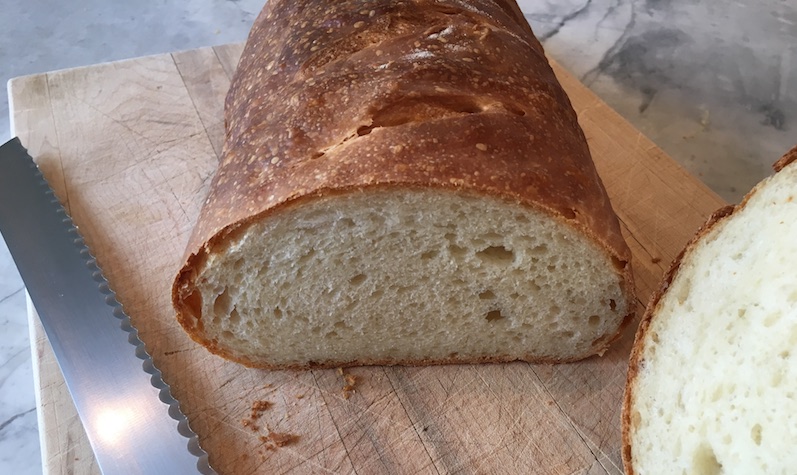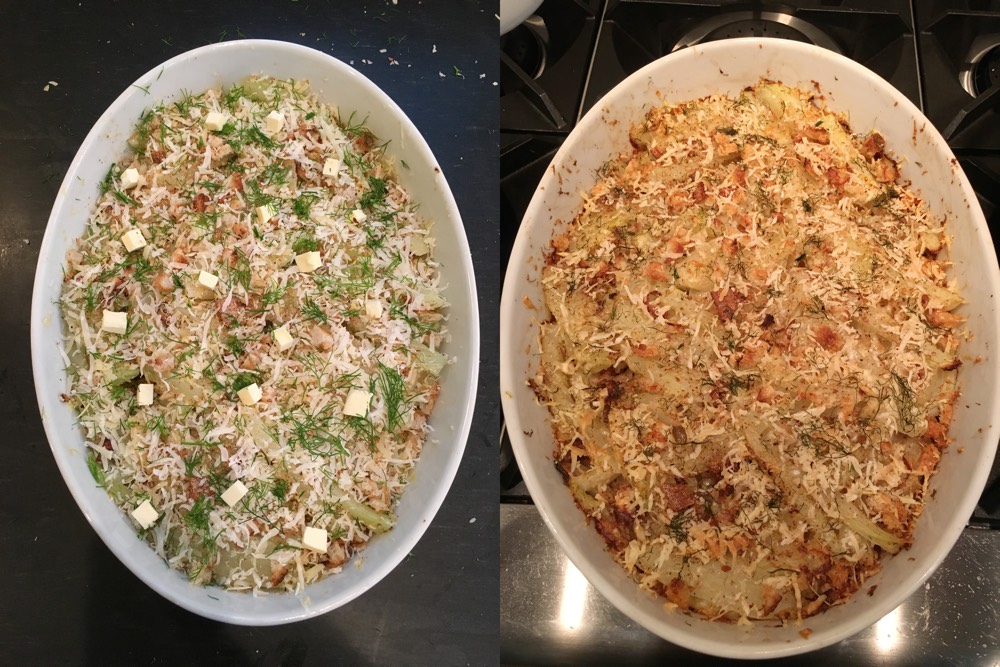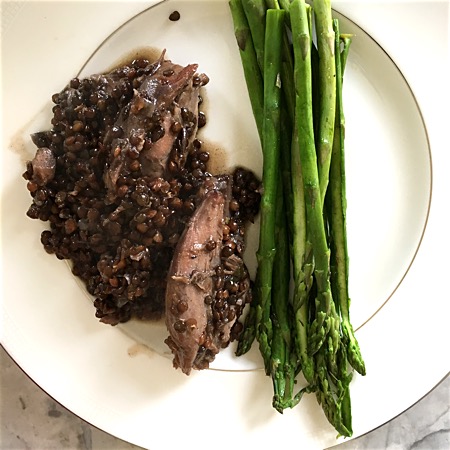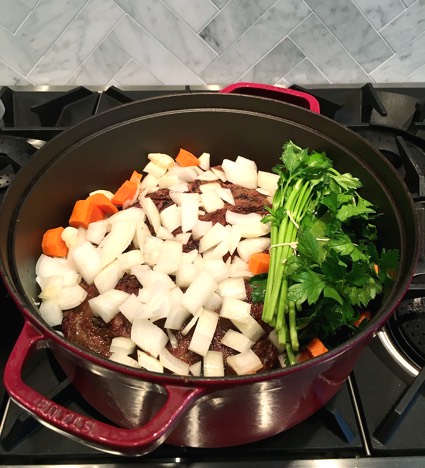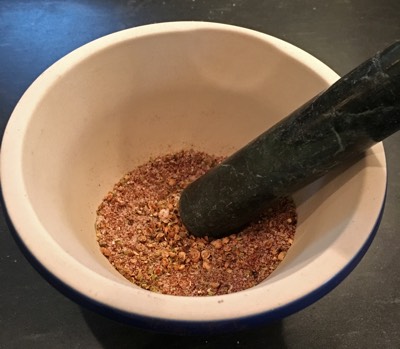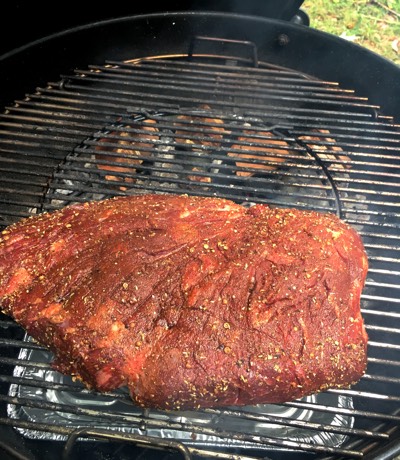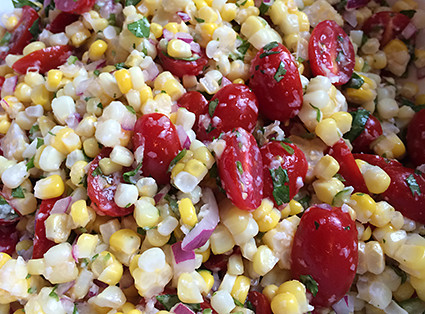I think there are three key things to a good risotto. First, making a decent broth. Second, constant stirring. Third, not overcooking it.
I’ll often have broth in the freezer, made with the remains of a roast chicken, but in this case, we were without, so earlier in the day I made a turkey-based broth.
Turkey Broth
2 turkey drumsticks (or thighs)
2 large onions
4 large carrots
4 stalks of celery
2 turnips
handful of brown or white mushrooms
large handful of parsley
4 or 5 bay leaves
dry vermouth or white wine
Chop the all vegetables coarsely.
In a large pot, heat it up with a high flame until a drop of water sizzles. Drizzle a little olive oil in the pot and then brown the turkey drumsticks. Remove the turkey to the side and deglaze the pan with some dry vermouth or wine (i.e. pour in about half a cup and scrape up the brown bits on the bottom of the pan with a spatula).
Lower the heat to medium and add in the onions. Let the onions turn translucent and then add everything else back into the pot, including the turkey. Add another cup of vermouth or wine, and then fill the pot with cold water until the level of the water is above the top of the vegetables by a couple inches. Bring to a boil, then reduce to a simmer and simmer for 3 hours, partially covered, adding more hot water from a kettle if it drops below the tops of the vegetables.
Remove and discard the turkey and vegetables with a slotted spoon, and then pour the broth into a large bowl through a strainer. If you want to make your broth even richer, add the broth back into the pot and put in fresh vegetables and cook for another few hours.
Shitake and Manchego Risotto
your broth (ideally 10-12 cups worth)
3 tbsp unsalted butter
olive oil
2 cups arborio rice
1 large shallot, diced
1/2 vidalia or spanish onion, diced
large handful of shiitake mushrooms, thinly sliced
1/2 cup of thawed frozen peas
2/3 cup of dry vermouth or white wine
zest of 1 lemon
1 cup of finely grated manchego cheese
large handful or parsley, finely chopped
salt and pepper
Prep all of your ingredients ahead of time, because once the stirring starts, it is full-on. You’ll get a shoulder workout in.
In a saute pan, melt 1 tbsp of butter on medium-low heat and then add your shallots and onions. Cook until they start to turn translucent and add in the mushrooms. Cook for 5 minutes, stirring occasionally. Set aside.
Have your broth, which should be hot, in a bowl with a ladle to the side of your stove top.
In a large pot, melt the butter and a little olive oil on medium heat. Add in the rice and let it cook, stirring periodically, for 2 minutes. Add in the vermouth and stir until the liquid is mostly (not entirely) absorbed. Add a ladel of broth and stir until the liquid is mostly absorbed.
Stir in the shallots, onions and mushrooms, and keep on adding in ladels of broth, one at a time, allowing each amount of broth to be mostly absorbed. Stir in a half-teaspoon of salt and 2 pinches of ground black pepper.
After about twenty minutes of this, taste the risotto. You want to taste for salt and pepper as well as the doneness of the rice. You want to cook the rice to a just-about al dente state, which, just like with pasta, means that it *almost* soft but still has a bit of a bite to it.
When you feel like you are almost there (having continued to stir in single ladles of broth), stir in the peas, lemon zest, cheese and parsley. Continue to stir for 2-3 minutes, keeping the risotto moist (but not swimming) with broth as needed, just long enough for the peas to cook but not so much that they lose their bright green color. As you do this, do a final taste for salt and pepper and adjust as necessary.
Serve!
(then with any leftovers, make risotto balls wrapped in chard!)
